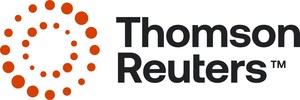US Dominance in Scientific Research Significantly Challenged by Increased Competition from Europe and Asia, According to Thomson Reuters Study
PHILADELPHIA and LONDON, Nov. 12, 2010 /PRNewswire/ -- A study from Thomson Reuters released today shows that the US is no longer the "colossus of science" that it was and has not kept pace with the increased output from European and Asia-Pacific nations.
The study, Global Research Report: United States, found that research output from the US has been surpassed by that of Asia and Europe. In 1981, US scientists fielded nearly 40 percent of research papers in the most influential journals(1). By 2009, that figure was down to 29 percent. During the same period, European nations increased their share of research papers from 33 percent to 36 percent, while research contributed by nations in the Asia-Pacific region increased from 13 percent to 31 percent.
Of particular note is China's world share of research output, which has grown from 0.4 percent in 1981 to 10.9 percent in 2009. China is now the second largest single-nation producer behind the US.
While the US has sustained its exceptionally strong investment in health-related research and biomedical sciences, research in fields such as the physical sciences and engineering have taken a back seat. In contrast, Asian countries have developed a research economy more closely linked to their strong industrial manufacturing base and are on a "rising trajectory" when it comes to fields such as materials science and engineering.
"While the total volume of research output for the US has not risen as quickly as Europe and Asia, the average influence of US research papers remains high at 40 percent above the world average," said Jonathan Adams, director of research evaluation at Thomson Reuters. "European nations have, however, begun to close the gap in terms of quality, and the UK in particular almost matches the US in terms of average influence -- and in certain fields even exceeds it."
The report also suggests that the structure of the US research base may be contributing to its diminished position. The study found evidence of an increasing concentration in research output and excellence among the top institutions in the US. The 61 US members of the Association of American Universities (AAU), for example, now account for 56 percent of US output in the five-year period ending in 2009. The report's authors question whether such concentration, in comparison to other countries, is the most effective strategy for the US to maintain its historical leadership in science.
The study is part of the Global Research Report series from Thomson Reuters that illustrates the changing landscape and dynamics of scientific research around the world. These studies draw on data found in Web of Science(SM), available on the Thomson Reuters Web of Knowledge(SM) platform -- the world's largest citation environment of the highest quality scholarly literature, as represented in InCites and other evaluative offerings.
For more information, please visit http://researchanalytics.thomsonreuters.com/grr/.
(1) As indexed by Thomson Reuters in the Web of Science database. That dataset represents a cross-section of the leading international research literature.
Thomson Reuters
Thomson Reuters is the world's leading source of intelligent information for businesses and professionals. We combine industry expertise with innovative technology to deliver critical information to leading decision makers in the financial, legal, tax and accounting, healthcare and science and media markets, powered by the world's most trusted news organization. With headquarters in New York and major operations in London and Eagan, Minnesota, Thomson Reuters employs 55,000 people and operates in over 100 countries. For more information, go to www.thomsonreuters.com.
SOURCE Thomson Reuters
WANT YOUR COMPANY'S NEWS FEATURED ON PRNEWSWIRE.COM?
Newsrooms &
Influencers
Digital Media
Outlets
Journalists
Opted In





Share this article